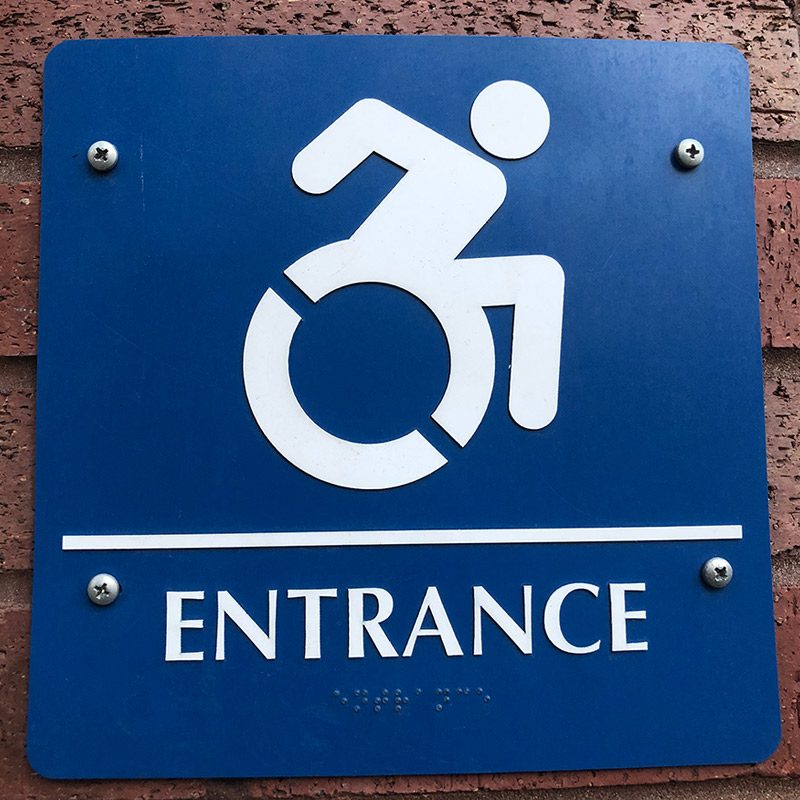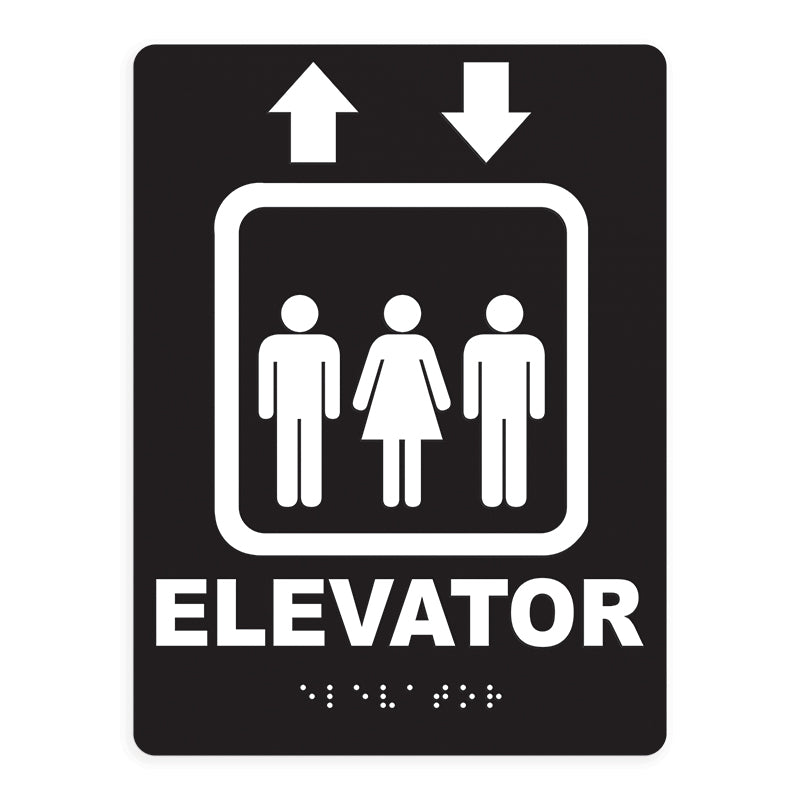Check out the Significance of ADA Signs in Public Spaces
Check out the Significance of ADA Signs in Public Spaces
Blog Article
Exploring the Key Features of ADA Indications for Boosted Ease Of Access
In the realm of access, ADA indicators work as silent yet powerful allies, guaranteeing that areas are navigable and inclusive for individuals with impairments. By integrating Braille and responsive components, these indications break barriers for the aesthetically impaired, while high-contrast shade schemes and legible fonts satisfy varied aesthetic requirements. Their critical positioning is not arbitrary but rather a computed initiative to facilitate smooth navigation. Yet, beyond these features lies a much deeper narrative about the evolution of inclusivity and the recurring dedication to creating equitable spaces. What a lot more could these indicators indicate in our quest of global availability?
Importance of ADA Conformity
Guaranteeing conformity with the Americans with Disabilities Act (ADA) is important for fostering inclusivity and equivalent gain access to in public areas and work environments. The ADA, enacted in 1990, mandates that all public facilities, companies, and transport solutions accommodate individuals with impairments, guaranteeing they appreciate the same legal rights and possibilities as others. Compliance with ADA criteria not just meets legal obligations yet also enhances an organization's track record by showing its dedication to variety and inclusivity.
One of the essential elements of ADA conformity is the implementation of obtainable signs. ADA indicators are designed to ensure that individuals with handicaps can conveniently browse with buildings and spaces.
Furthermore, adhering to ADA policies can reduce the danger of potential penalties and lawful effects. Organizations that fall short to adhere to ADA standards may face fines or claims, which can be both monetarily difficult and harmful to their public image. Therefore, ADA conformity is indispensable to fostering an equitable environment for everyone.
Braille and Tactile Elements
The unification of Braille and responsive elements into ADA signage personifies the concepts of access and inclusivity. It is normally placed under the corresponding message on signage to make sure that individuals can access the details without aesthetic help.
Responsive elements expand past Braille and consist of raised signs and characters. These elements are created to be noticeable by touch, allowing individuals to identify area numbers, washrooms, leaves, and other important areas. The ADA sets specific guidelines concerning the size, spacing, and positioning of these responsive components to maximize readability and make certain uniformity across various environments.

High-Contrast Color Design
High-contrast color design play a critical duty in enhancing the exposure and readability of ADA signs for individuals with aesthetic impairments. These schemes are essential as they make best use of the distinction in light reflectance between message and background, making sure that signs are easily discernible, also from a range. The Americans with Disabilities Act (ADA) mandates the use of certain shade contrasts to suit those with minimal vision, making it a vital aspect of compliance.
The efficiency of high-contrast colors depends on their ability to attract attention in various illumination conditions, including poorly lit settings and locations with glare. Typically, dark message on a light background or light message on a dark history is used to attain optimal contrast. As an example, black text on a yellow or white background provides a stark visual distinction that helps in quick acknowledgment and understanding.

Legible Fonts and Text Dimension
When taking into consideration the design of ADA signage, the option of legible font styles and proper text size can not be overemphasized. These aspects are important for making sure that indicators are accessible to individuals with aesthetic disabilities. The Americans with Disabilities Act (ADA) mandates that font styles have to be sans-serif and not italic, oblique, manuscript, extremely ornamental, or of uncommon kind. These demands aid ensure that the text is conveniently readable from a range and that the characters are distinct to diverse target markets.
According to ADA standards, the minimum text elevation need to be 5/8 inch, and it ought to enhance proportionally with checking out distance. Uniformity in message dimension contributes to a view it now cohesive aesthetic experience, assisting people in navigating settings successfully.
Additionally, spacing in between letters and lines is integral to clarity. Sufficient spacing avoids characters from showing up crowded, boosting readability. By sticking to these requirements, developers can significantly boost access, making sure that signage serves its desired function for all people, no matter their visual capacities.
Effective Positioning Strategies
Strategic positioning of ADA signs is important for making the most of accessibility and making certain compliance with lawful requirements. ADA guidelines state that indications must be mounted at an elevation between 48 to 60 inches from the ground to ensure they are within the line of view for both standing and seated people.
Additionally, signs must be put surrounding to the latch side of doors to permit simple recognition before entrance. This positioning assists people find spaces and areas without obstruction. In cases where there is no door, indicators ought to be located on the closest adjacent wall. Uniformity in indicator placement throughout a center boosts predictability, lowering complication and improving total individual experience.

Conclusion
ADA indications play a crucial function in promoting ease of access by integrating functions that resolve the demands of people with impairments. These aspects collectively promote an inclusive atmosphere, emphasizing the significance of ADA conformity in making sure equal accessibility for all.
In the world of ease of access, ADA indicators offer as quiet yet effective allies, making certain that areas are accessible and comprehensive for individuals with handicaps. The ADA, enacted in 1990, mandates that all public centers, companies, and transport services suit individuals with specials needs, ensuring they enjoy the exact same civil liberties and opportunities as others. ADA Signs. ADA indicators are developed to make sure that people with disabilities can quickly browse through buildings and spaces. ADA standards stipulate that indications ought to be placed at an elevation between 48 to 60 inches from the ground to guarantee they are within the click to investigate line of view for both standing and seated individuals.ADA signs play a vital role in advertising availability by Visit Your URL integrating functions that resolve the demands of individuals with specials needs
Report this page